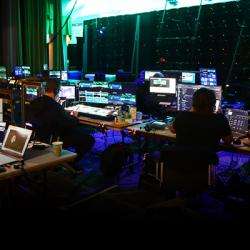Learning Technology Trends

There is no doubt that we are in the midst of significant changes in the way we teach and learn in the boardroom and classroom. Those involved with corporate and academic instruction have seen teaching and learning upheavals in both pedagogical and technological terms. E-Learning, m-Learning, Blended Learning and Distance Education are just a few of these trends over relatively recent times.
From the School Without Walls, Open Classroom movement lead by Herbert Kohl in the 70’s, to advent of the personal computer in the 1990’s, to the “Flipped Classroom” of today, the “Sage on the Stage” traditional instructional methodology is being rapidly augmented by placing the power of learning in the hands of the learner. Those with a resistance to change in the way they teach and learn, with a “head-in-the sand” techno-phobic mentality, are being rapidly replaced by trainers and educators who have adapted to meet their learners now living in a world of technology. With the unlimited resource of the internet available to both teachers and students alike, all instructors should realize that a multi-medium approach with its infinite vehicles to deliver instruction increases the effectiveness and engagement of the learner, and instructor.
Most instructors agree that 80% learned in traditional instruction is forgotten if not used consistently within 48 hrs. What we have learned over time is that learning is an individualized prescription and that one size does not fit all. It must be remembered however that technology is only another piece of chalk in the arsenal of an instructor and that a blended approach incorporating the full array of methodologies, including instructor-led, often yields the best learning results.
Many of us have been through an on-line learning experience with varying levels of satisfaction. It should not be forgotten, that regardless of the methodology and the extent of technology used, effective learning is only as good as the underlying instructional design, the quality, and delivery vehicle of the materials. A good example comes from Hollywood and the oft-times outrageous budgets spent on blockbuster flops that are over the top in special effects technology but fail in story-telling script-writing.
Corporations and academia are in a constant battle to attract and retain the best employees and students. These talented young individuals often make their decisions to join your organization or attend your university based on the extent to which you have embraced technology. The fact is that young people are part of the connected generation and most have never known a world without the internet and mobile devices providing on-demand and instantaneous access to information.
The question is: How can both the corporate and academic worlds keep themselves vital and embrace the ability to respond and adapt to these rapid changes? Technology has proven itself to be no substitute for human interaction and learning collaboration. All of the human senses need to be engaged, the process of interruption aids creative thought, and person-to-person body language is processed on both a conscious and sub-conscious level. Therefore, technology provides only a partial solution and the blended approach of technology and human interaction supported by carefully crafted instructional design is the key to effective instruction and learning.
Collaborative Learning
One of the current trends is the concept of Collaborative Learning, bringing together the instructor and other learners together on a common learning goal. Quickly accepted multi-platform, wireless collaboration technologies have resulted in the rise of the huddle room and interactive classroom, where students can share their multi-sourced resources on the same screen during educational/training activities. One this region’s largest construction companies recently embraced this collaborative concept, incorporating the project management philosophy of Integrated Project Delivery by using wireless collaboration tools and interactive touch screen monitors which led to greater cooperation among the many stake-holders in the construction of a new skyscraper on the Philadelphia skyline. Additionally, a number of major regional universities are now working with their architectural partners to design new innovative learning environments enhancing collaboration. The classroom and boardroom of the future is now taking place. Manufacturers’ technologies such as Barco’s Click-Share, Mersive’s Pod/Solstice, and Crestron’s Air Media, to name just a few, are providing these collaborative technology solution.
Virtual Reality
Another trend is the use of Virtual Reality to create a new and separate world designed to maximize learning. Coming out of the world of military training, virtual reality is being used as a learning aid to simulate real-life situations such as emergency response scenarios and medical procedures. I recently had the pleasure of experiencing Labster, a virtual reality system that has replaced basic skill laboratory training and experimentation in universities and corporations world-wide. Not only can these virtual environments be recreated visually, but other senses can also be recreated via touch to experience texture and weigh, and even smell. These technologies are still in the very early adoption phase due to the budgetary considerations and the necessity of wearing a bulky headgear. For an inexpensive way to experience virtual reality, go to Google Cardboard.
Augmented Reality
But even more promising than Virtual Reality is Augmented Reality, with its ability to enhance existing reality and provide a just-in-time mobile job aid. As stated previously, learning retention is a challenge to the learning goals of all educators. The ability to recall the information you learned, as you need it, is based on individualized learning styles and mental processing. Now that almost everyone has a cell phone in their pocket, this power mini-computer can be used to provide on-demand training with a minimal investment and without a bulking headset. To experience this technology yourself, right now, go to your app store and download the free IMS AR Live app. Then use this phone app to scan the pictures of the forklift or the painting below. Scanning these still images will provide access to training/educational videos viewed on your mobile device. The potential for augmented reality for on-demand, just-in-time learning is HUGE.
Keeping Up
So what are the best strategies you can deploy to keep up with this rapidly changing learning technology landscape? Read articles, subscribe to on-line magazines, download the Horizon Reports, become active in local social networks and your local meetups, and become involved with PADLA, the PA/DE/NJ Distance Learning Association. PADLA’s 17+ year mission is to provide a professional forum, thru face-to-face/on-line bi-monthly meetings, and an Annual Conference, bringing together learning technology professionals from the Corporate, Higher Ed, K-12, Non-profit, Medical, and Government sectors to share their experiences concerning the use of technology to enhance human performance in the classroom and boardroom.
Article written by Louis Stricoff, M.Ed, CTS, Director of New Business Development with IMS Technology Services.
Share This Article
Categories
Latest Posts

Philadelphia 2026: Is Your Venue Ready for the Spotlight?

Scalable AV Infrastructure for Life Science Enterprises

Extend Your Reach: The Power of Virtual and Hybrid Events

Why Every Detail Matters in Investor and Year-End Meetings

IMS Technology Services Welcomes John Beaulieu
Tags
Contact Us
- Headquarters: 3055 MCCANN FARM DRIVE, GARNET VALLEY, PA 19060
- Event Staging: 2000 COLUMBIA AVENUE, SUITE 300, LINWOOD, PA 19061
- Southeast Office: 404 SUNPORT LANE, SUITE 350, ORLANDO, FL 32809
- Phone: + 610-361-1870
- Contact Us
Services
Recent Posts

Philadelphia 2026: Is Your Venue Ready for the Spotlight?

